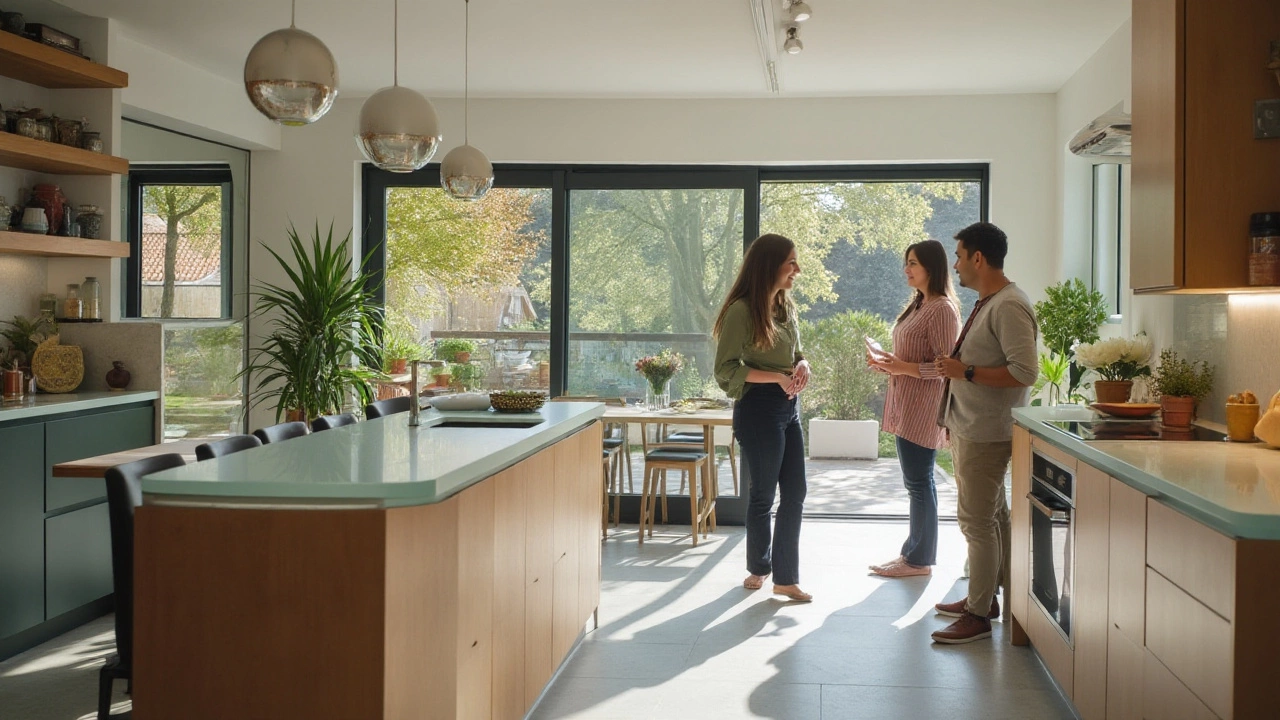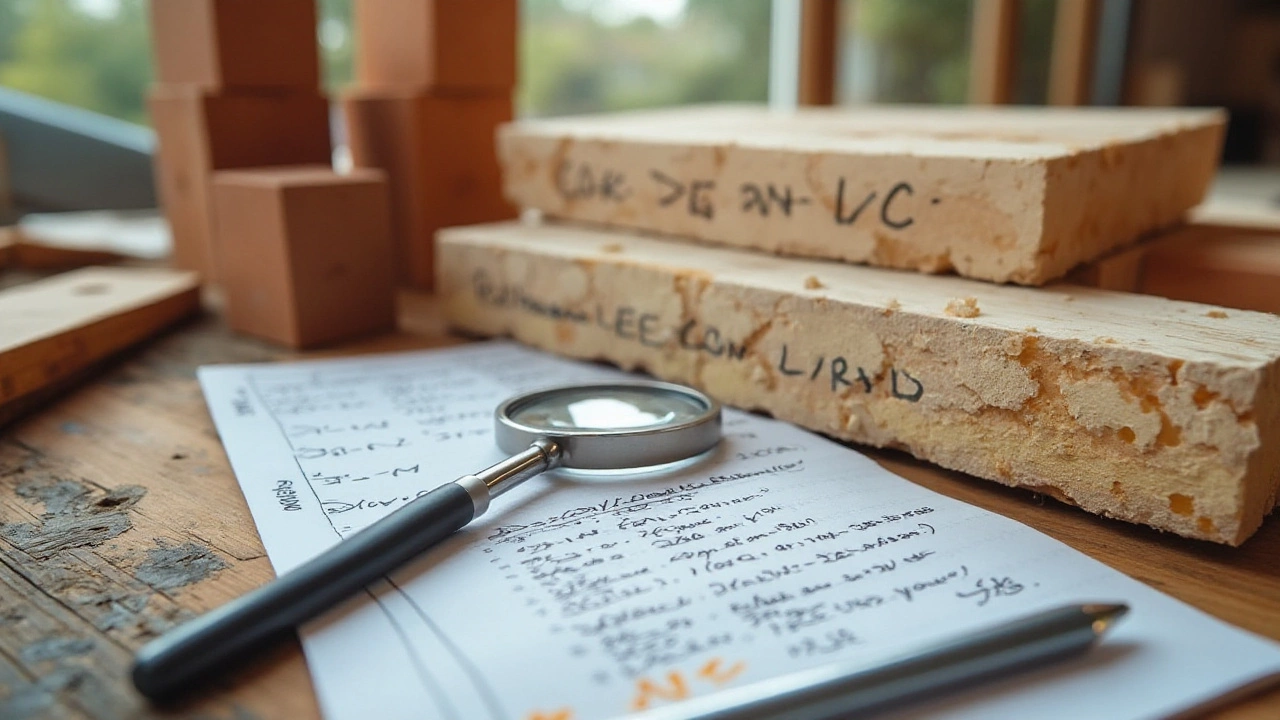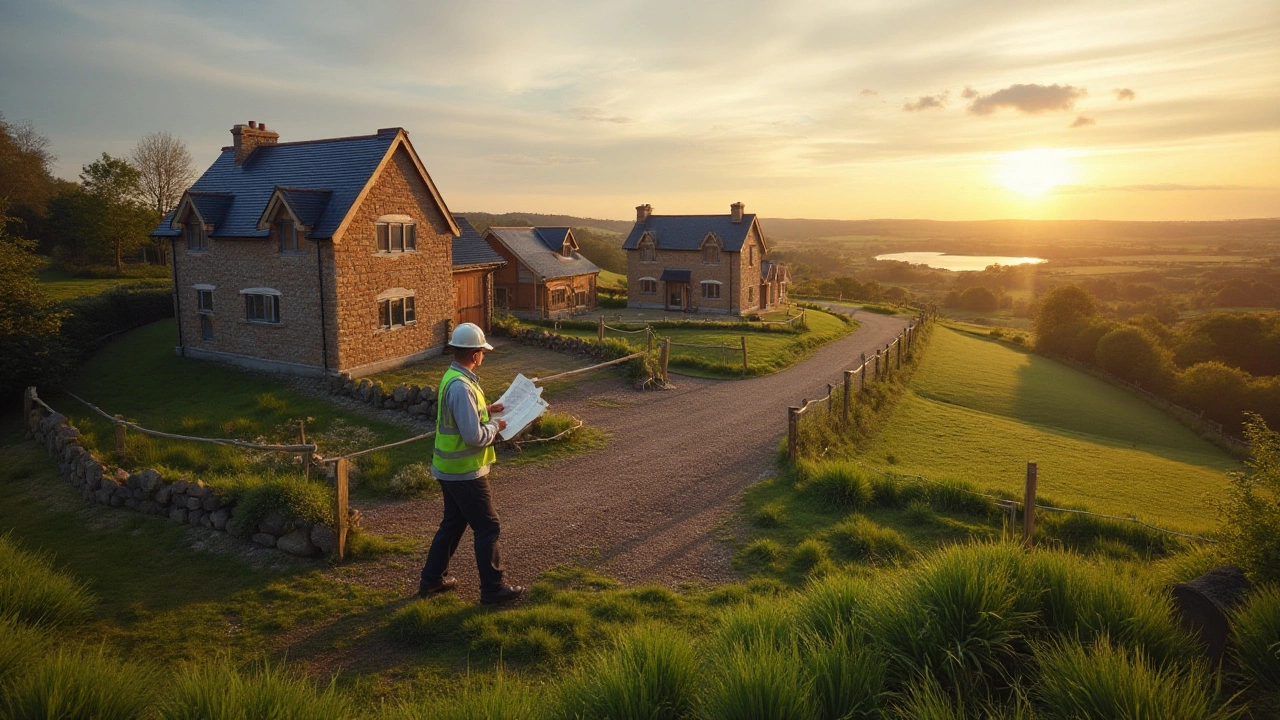For many, purchasing a newly built home is an exciting milestone—a chance to carve out a fresh chapter in a space that has never been lived in before. However, amid the smell of fresh paint and sparkle of unused kitchens, a pertinent question looms: Are these new homes built to stand the test of time, or are they just modern marvels with an expiration date?
In today's fast-paced construction industry, new methods and innovative materials promise not only cost efficiency but also durable results. However, reality often presents a different picture for some buyers. As the earth shifts towards more sustainable practices, the materials used in construction are evolving, raising questions about their long-term reliability.
Navigating these modern developments requires an understanding of the balance between speed and quality. With a keen eye on current building codes and industry standards, potential homeowners can better scrutinize what 'durable' means in the context of new builds. This journey of discovery not only helps in making a sound investment but also ensures the sanctity and longevity of what many consider their greatest asset—home.
- Modern Construction Techniques
- Material Quality and Sustainability
- The Role of Building Codes
- Common Issues in New Builds
- Tips for Ensuring Durability in New Homes
Modern Construction Techniques
In the realm of new builds, innovative construction techniques have transformed the housing landscape, reshaping what durability looks like in modern homes. These methods often prioritize speed, efficiency, and sustainability without compromising the quality expected from a lasting dwelling. One of the most significant shifts has been the adoption of modular and prefabricated construction. Unlike traditional methods that rely heavily on on-site processes, these techniques assemble building components off-site, in a controlled environment, before transporting them to the plot. This not only reduces construction time but also minimizes waste and increases precision, resulting in structures that are both durable and eco-friendly.
The use of advanced composite materials is another hallmark of contemporary construction. Materials such as fiberglass and carbon fiber provide exceptional strength-to-weight ratios, making buildings more resilient against natural calamities like earthquakes and severe weather conditions. Their application is not limited to support structures; it's also found in cladding and insulation, enhancing the thermal and acoustic performance of homes, which contributes to both comfort and longevity. Interestingly, these materials are often recycled, making them an integral part of sustainable building practices.
Technological integration in construction practices has also leapfrogged due to the evolution of Building Information Modeling (BIM) tools. These digital representations allow architects, engineers, and builders to collaborate on a single platform, optimizing designs for efficacy and identifying potential durability issues before construction begins. BIM facilitates real-time updates and modifications, ensuring that each element of the new build is scrutinized for quality, which can significantly enhance the life expectancy of the home.
Constructors today are also leaning towards green building certifications, like LEED, which emphasize sustainable practices. These certifications often endorse structure designs and techniques that focus on resource efficiency, energy conservation, and improved indoor environmental quality. According to a recent study by the Green Building Council, homes with such certifications typically demonstrate improved property values and long-term savings for owners due to reduced utility costs and maintenance requirements. This relationship between sustainable practices and enhanced durability is a testament to the evolution of the building industry.
The International Housing Association notes, "The integration of technological and sustainable solutions in modern builds is not just a trend but a necessary evolution to meet global standards."
Beyond these technical innovations, the construction sector is placing emphasis on smart technologies within homes. Automation systems that control home environments not only add to the convenience but also contribute to the durability by maintaining optimal conditions that deter wear and tear. For instance, automated temperature and humidity adjustments can protect finishes and structural components from rapid degeneration, providing another layer of longevity.
Material Quality and Sustainability
When considering the durability of new builds, material quality emerges as a linchpin. Builders now stand at a crossroads, balancing the traditional appeal of sturdy, time-tested materials with newer, eco-friendlier alternatives. This dynamic shift stems from an ever-growing societal push towards sustainability, urging the construction industry to innovate without compromising structural integrity. Whether it’s the wood framing systems, electrical installations, or even the paint on the walls, every element plays a crucial role in determining how long a new home can stand robustly.
Brick and mortar have long symbolized resilience, much like the ancient Roman structures that have endured centuries. Yet, today’s eco-conscious generation often leans towards recycled materials. Notably, alternatives such as reclaimed wood and steel, recycled concrete, or even rammed earth not only promise lower carbon footprints but are often touted to offer comparable strength. According to a report by the National Association of Home Builders, homes built with recycled steel require fewer materials and boast exceptional longevity, often outperforming traditional wood frames.
"The choice of materials is just as critical as the design itself. Building sustainably isn't just about using green materials; it's about choosing options that enhance the performance and lifespan of a building," states Dr. Emma Hardington, a renowned architect specializing in sustainable construction.
Beyond the materials themselves, the innovation in the way they’re being used is groundbreaking. Composite materials, for example, amalgamate several elements to create a product stronger than its parts. Naturally, this innovation brings a host of benefits—resistance to pests, rot, and harsh weather conditions, ultimately contributing to the long-term durability of a structure. Additionally, advancements in insulation materials now mean homes are not only resilient but more energy-efficient, further aligning with sustainable goals.
Sustainability in the materials is not only a promise of environmental responsibility but a practical choice for homeowners. For instance, bamboo, a rapidly renewable resource, is gaining popularity as a flooring option thanks to its strength and aesthetic versatility. With environmental regulations becoming more robust, the construction industry is increasingly encouraged to prioritize materials that not only meet durability standards but align with ecological mandates. As consumers become more aware of their environmental impact, the demand for durable, sustainable homes is expected to rise, making it an integral consideration when evaluating construction quality.

The Role of Building Codes
When it comes to constructing new homes, building codes serve as the backbone for ensuring safety and durability. These codes are essentially a set of regulations that builders must follow, aimed at safeguarding the wellbeing of occupants and the longevity of structures. Across countries, building codes vary, reflecting local climate conditions, available materials, and construction practices. However, the core purpose remains consistent—to create homes that secure their inhabitants against environmental stresses and structural failings.
Adhering to these codes is not optional; it is a legal requirement. Construction professionals are bound to comply with these standards, which specify requirements for everything from the foundation and framing to the electrical systems and fire safety measures. They are updated periodically to incorporate new research findings and technological advances. As natural disasters become more frequent and severe, there is a growing emphasis on codes that address extreme weather resilience. Recent updates often emphasize energy efficiency and sustainability, which align with global trends towards reducing environmental impact.
Interestingly, the rigorousness of building codes can sometimes be correlated with regional experience of natural phenomena like hurricanes, earthquakes, or floods. For example, in seismic zones, codes require additional reinforcements and structural stability to help buildings withstand tremors. Similarly, in areas prone to heavy snow or hurricane-force winds, roofs are designed to endure such forces without giving way.
According to the International Code Council, "Building codes protect public health, safety, and general welfare as they relate to the construction and occupancy of buildings and structures."This encapsulates the essential role these guidelines play in everyday safety.
While these codes are mandatory, there's a level of complexity in their application. Often, inspectors are the on-ground enforcers, examining builds to ensure compliance. Unfortunately, human error or cost-cutting can lead to violations. These problems underline the importance of hiring reputable professionals who pride themselves on adherence rather than cutting corners. Homebuyers can also get involved by understanding these regulations, asking pointed questions, and ensuring that necessary inspections are part of their purchase agreement.
For those investing in new builds, awareness of relevant codes offers peace of mind. It's reassuring to know your home is built in alignment with robust safety standards. Moreover, homes that comply with or exceed these codes often enjoy better resale value and lower insurance costs, given their reduced risk profile. For these reasons, modern buyers often prioritize understanding the ins and outs of building codes as part of their due diligence process. Building codes are more than just rules; they are the unsung heroes that contribute durability and peace of mind to the modern homeowner.
Common Issues in New Builds
Though the allure of pristine countertops and the latest design trends is captivating, new builds are not immune to certain common pitfalls that can mar the homeowner's experience. One of the prevalent issues revolves around the quality of construction itself. Often, the urge to meet deadlines and cut costs leads to shortcuts that may compromise a home’s structural integrity and durability. For instance, improper installation of foundational aspects like wiring and plumbing can spell trouble down the line, resulting in leaks or electrical failures that demand costly repairs.
Another common concern is inadequate soundproofing—the bane of many residents in newly constructed suburban developments and urban high-rises alike. While open layouts and airy designs are favored, if less attention is paid to the insulation between walls and floors, privacy can quickly become an issue. This is particularly evident in multi-unit buildings where noise from neighbors can turn a dream home into a noisy nightmare.
The emergence of new materials and technologies in construction has also brought its share of challenges. Newly popularized materials that promise sustainability and cost-effectiveness sometimes lack long-term proven resilience. In some instances, these alternatives have not stood the test of time, leading to unforeseen degradation or failure.
"New materials are exciting, but they need to be vetted thoroughly," says John Carpenter, a construction expert, "Sometimes traditional materials like wood and brick still outperform modern solutions when it comes to durability."
A unique challenge in modern constructions is related to energy efficiency systems. Although intended to reduce carbon footprints and utility costs, these systems can be complex and sometimes poorly implemented. Incorrectly installed HVAC or solar panels not only underperform but may also become dangerous safety hazards. Homeowners often find themselves in a position where maintenance becomes tedious and expensive—a bitter irony for those who sought after the latest in eco-friendly housing.
Finally, homebuyers frequently encounter issues relating to inappropriate landscaping around new builds. Proper drainage is often neglected, leading to rainwater pooling or erosion. Poor landscape planning can affect a house’s aesthetic and structural elements by encouraging moisture problems that damage foundations and create mold issues indoors. Effective planning and execution are key, but these tend to get overlooked in the rush to complete and sell properties.

Tips for Ensuring Durability in New Homes
When investing in a new build, understanding how to ensure its durability is crucial. Begin by scrutinizing the materials used. Modern constructions often use innovative solutions like engineered wood or high-tech composites. These materials promise strength but vary in lifespan when set against traditional choices such as brick or concrete. Homebuyers should research longevity, maintenance, and compatibility with the local climate. A material might be revolutionary but unsuitable for extreme weather conditions, ultimately compromising the home’s durability.
Another critical factor centers around the structural design. Paying attention to load-bearing walls and the integrity of foundational elements is vital. Houses built with open-plan concepts need careful assessment as they often rely on fewer walls. It's important to confirm that such designs don't jeopardize stability. Consulting with a structural engineer can offer peace of mind. They can provide insights on design choices that enhance or weaken the overall resilience of your new home. Don't just rely on the builder's word; seek an independent evaluation if possible.
"A home's durability often lies more in its planning than in its execution," says Dr. Emily Price, a renowned civil engineer. "Faulty designs can lead to unforeseen repair costs, even with the best materials."
Assessing the reputation and past work of the builder is also invaluable. Experience says much about their capacity to deliver high-quality, durable homes. Look for reviews of past projects, and if permissions allow, even visit a handful of their older constructions. Look for wear indicators and talk to existing inhabitants about their experiences with maintenance or repairs. You can glean much from firsthand user feedback which isn't covered in glossy brochures.
The role of technology in ensuring construction quality is an emerging trend. Inquire about smart home systems and their integration into the build. Such technologies can monitor environmental conditions, detect leaks, or even inform on structural changes over time. These advances, when embedded early in construction, can prolong the serviceability of many home components. Installing sensors for water leaks or heat tracking can provide alerts before small issues balloon into significant problems, preserving the house's longevity.
Finally, once you've settled into your newly constructed home, periodic maintenance remains essential. Regular checks for potential signs of wear and contact with professionals for maintenance tasks should be consistently scheduled. Simple actions such as annually inspecting roofs or resealing windows can forestall more substantial faults. Establishing and sticking to a maintenance schedule helps in identifying problems early, allowing for timely remedial action that safeguards the building from preventable damage.
